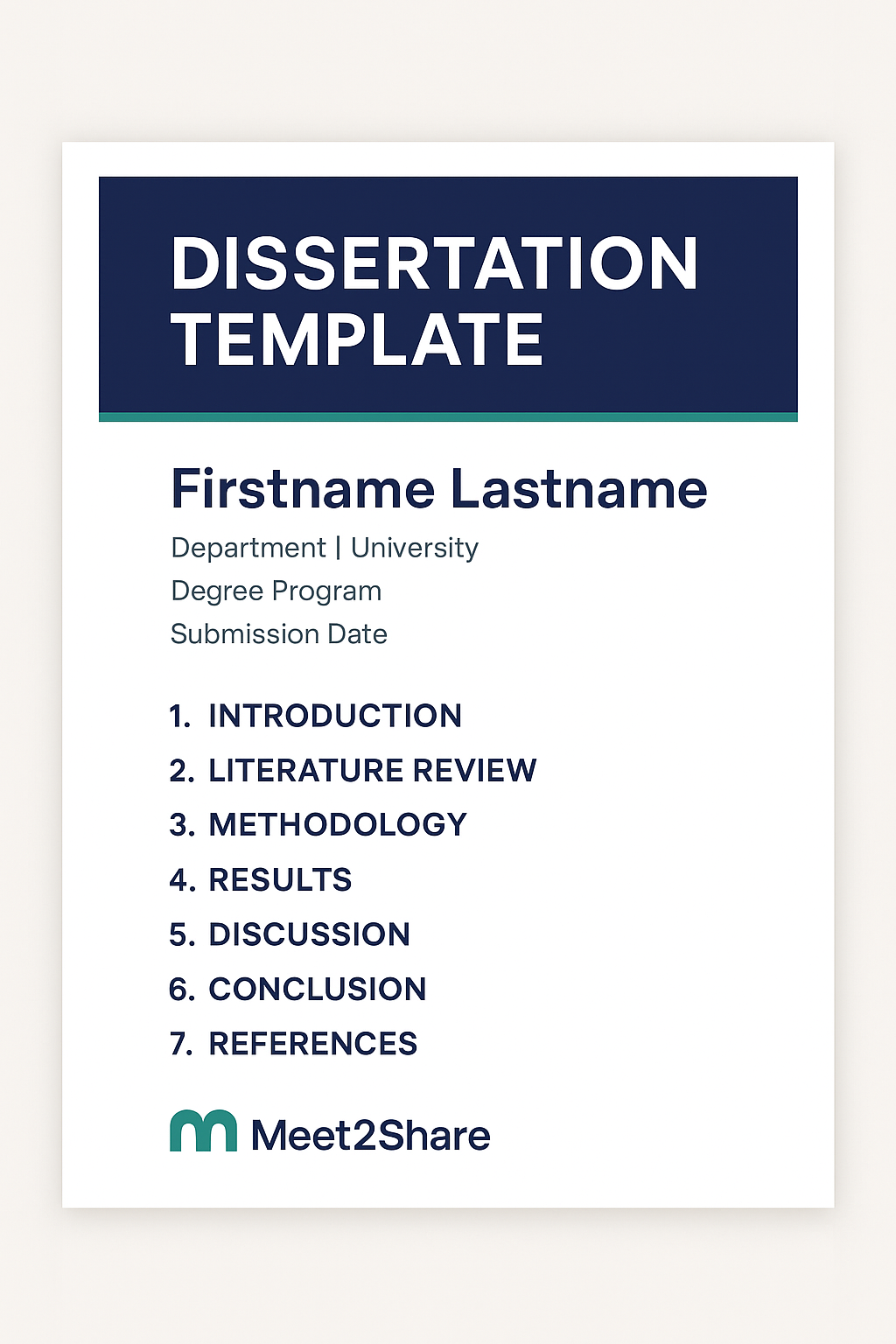
A dissertation is a long-form academic project based on original research. It represents the culmination of advanced study and is usually the final requirement for a PhD. In some universities, the term also applies to undergraduate or master’s projects.
This is often the biggest piece of writing you’ll ever undertake—requiring research, writing, and critical analysis skills. It can feel overwhelming, but having a clear structure, reliable resources, and a supportive community makes all the difference.
👉 Join the Meet2Share Questions Hub to exchange ideas, share drafts, and get real-time feedback from students and academics worldwide.
Dissertation vs. Thesis: Key Difference
- US: Dissertation = PhD project.
- UK & Commonwealth: Dissertation = bachelor’s or master’s project; Thesis = doctoral project.
💡 Want to see how students around the world approach final projects? Explore case studies and peer tips on Meet2Share.
Dissertation Committee & Proposal Process
Before writing, you’ll need to:
- Form a committee of supervisors and faculty members.
- Write a prospectus (proposal) outlining your aims, objectives, and research relevance.
Once your proposal is defended, you’re ready for the full dissertation process.
👉 Browse examples of successful proposals in the Meet2Share Questions Forum.
Dissertation Structure Template
The structure varies by field, but most dissertations include the following core sections:
- Title Page – Title, name, supervisor, institution, date
- Acknowledgements – Thank mentors, peers, family
- Abstract – 150–300 words (topic, method, key results, conclusion)
- Table of Contents – Chapters, subheadings, appendices
- List of Figures/Tables/Abbreviations/Glossary – Optional but helpful
- Introduction – Background, scope, objectives, questions
- Literature Review – Analyze existing research, identify gaps
- Theoretical Framework – Key theories and concepts guiding your study
- Methodology – Approach, data collection, analysis, justification
- Results – Report findings objectively
- Discussion – Interpret findings, implications, limitations
- Conclusion – Summarize contributions, suggest future research
- References – Consistent citation style
- Appendices – Surveys, transcripts, or extra material
📌 Pro Tip: Start building your dissertation with the free Meet2Share Dissertation Template (Word & PDF) → Download here.
How to Write a Literature Review
A strong literature review is the foundation of your dissertation. It should:
- Summarize and critique existing research
- Identify gaps, themes, and debates
- Justify your research’s contribution
👉 Need help evaluating sources? Join the Meet2Share Academic Exchange for peer feedback and curated resource lists.
Methodology: Choosing the Right Approach
Your methodology explains how you conducted your research. Include:
- Approach (quantitative, qualitative, or mixed)
- Data collection methods (interviews, surveys, experiments, etc.)
- Analysis techniques (statistics, discourse analysis, coding)
- Justification for your choices
💡 Share your methodology draft in the Questions Hub to get constructive feedback before committing.
Presenting Results & Discussion
- Results: State findings clearly (tables, graphs, statistics). Avoid interpretation here.
- Discussion: Analyze results, compare with literature, address limitations, explain unexpected outcomes.
👉 Many students practice their results defense by running trial Q&A sessions in the Meet2Share forum.
Dissertation Conclusion
The conclusion should:
- Restate your research question
- Summarize findings
- Highlight contributions
- Suggest directions for future research
End strong: make sure your work demonstrates why it matters.
Dissertation Examples
Here are three real-world dissertation titles for inspiration:
- Heat, Wildfire and Energy Demand: An Examination of Residential Buildings and Community Equity – C. A. Antonopoulos
- Exploring Income Volatility and Financial Health Among Middle-Income Households – M. Addo
- Mindfulness Meditation and Phantom Limb Pain in Amputees – N. S. Mills
For more examples and shared student insights, check the Meet2Share community.
✅ Dissertation Submission Checklist
Before you submit, make sure you’ve:
- ✅ Completed all sections (title page → appendices)
- ✅ Written a clear, concise abstract
- ✅ Structured a comprehensive literature review
- ✅ Justified your methodology
- ✅ Reported results objectively
- ✅ Interpreted findings in the discussion
- ✅ Written a conclusion answering your main research question
- ✅ Formatted references consistently
- ✅ Proofread thoroughly
👉 Need a second opinion? Upload your checklist in the Meet2Share Questions Hub and get peer review before submitting.
🎁 Free Dissertation Template
We’ve designed a Meet2Share-branded Dissertation Template (Word & PDF) with:
- ✅ Ready-made structure (all core sections included)
- ✅ Notes & prompts under each section
- ✅ Academic-friendly formatting
- ✅ Easy adaptation for your university requirements
👉 Download your Dissertation Template now
Final CTA
A dissertation is a journey—and you don’t have to take it alone. Join the Meet2Share community, where students and academics share resources, exchange drafts, and prepare for defenses together.
👉 Start now: Ask your first dissertation question here.